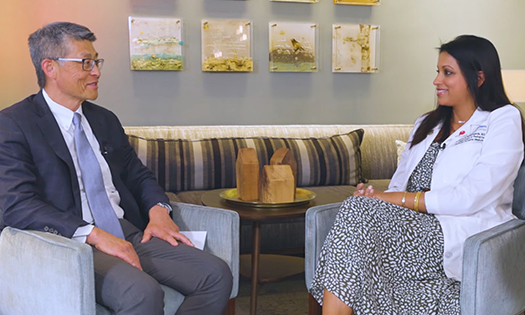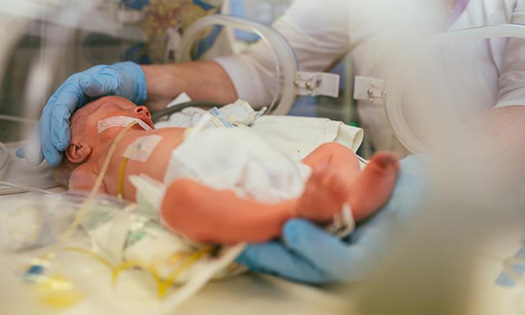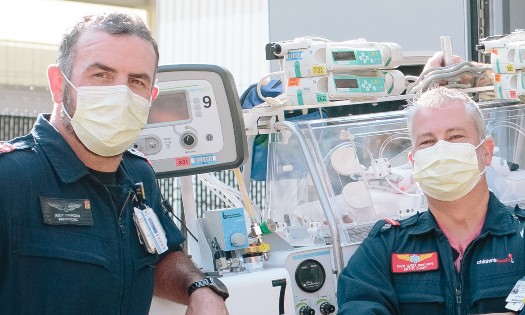Blood or oxygen deprivation during childbirth is a top cause of persistent injuries and lifelong neurodevelopmental impairments in children. At birth, hypoxic-ischemic encephalopathy (HIE), affects as many as 8 in 1,000 newborns worldwide. Severe cases can be fatal.
A new study confirms that newborn boys are more at risk for HIE than girls. This first-ever large-scale study was conducted by researchers at Children’s Medical Center Dallas, part of Children’s Health℠, UT Southwestern and Parkland Health.
The cross-sectional JAMA Network Open study analyzed 157,538 newborns born at Parkland Memorial Hospital in Dallas between Dec. 1, 2005 and Dec. 1, 2020. The principal investigators were Lina Chalak, M.D., Division Chief of Neonatology at Children’s Health and Professor of Pediatrics and Psychiatry at UT Southwestern, and Catherine Spong, M.D., Maternal Fetal Medicine Specialist at Children’s Health, National Academy of Medicine Professor and Paul C. MacDonald Distinguished Chair of the Department of Obstetrics and Gynecology at UT Southwestern.
In this Q&A, Dr. Chalak, a renowned neonatal asphyxia researcher, explains how these findings are driving new studies that may improve outcomes for newborns with HIE.
What is the significance of your research findings?
Previous studies investigating sex vulnerabilities to HIE at birth looked at relatively small numbers of newborns and didn’t show an increased incidence of HIE in either sex. We wondered if the small datasets influenced the results.
Our study analyzed data from umbilical cord blood collected from infants over a 15-year span. Parkland Memorial Hospital (PMH) has one of the busiest maternity wards in the U.S. A high volume of medically fragile newborns born at PMH come to the Level IV NICU at Children’s Health every year for advanced care.
We found significant fetal acidosis – an indication of birth asphyxia risk – in 5,590 cord blood samples. While the sex of these newborns was almost evenly divided, slightly more than half of HIE diagnoses (54%) occurred in males.
These findings are consistent with preclinical models that showed male animals are more susceptible to asphyxia at birth than females. We propose that estrogen is the underlying protective factor lowering the risk of HIE in newborn females. However, we need more studies to explore this theory.
What are you currently studying about HIE?
Our goal is to improve personalized approaches to HIE therapies and lifelong care. Our team is leading the Cool Prime Comparative Effectiveness Study for Mild HIE (COOL PRIME). This national 16-site trial is investigating the safety and efficacy of neonatal therapeutic hypothermia versus normothermia (normal body temperature or nontreatment) in improving cognitive and language outcomes in children with mild HIE.
Therapeutic hypothermia – sometimes called total body cooling – is currently the only treatment we have for HIE. It lowers a baby’s core body temperature to slow blood flow to the brain. It gives the brain more time to recover and may prevent additional brain damage.
About half of U.S. medical centers currently use therapeutic hypothermia for mild cases of HIE. However, the research showing that it reduces death or disability focused on children with moderate to severe HIE. Ours will be the first to test its safety and efficacy on mild HIE.
What else should providers know about HIE?
Therapeutic hypothermia treatment must start within 6 hours after childbirth – the sooner the better. However, most hospitals don’t test for HIE. Providers should request an umbilical cord blood gas test or a 3D MRI if a newborn has certain HIE risk factors, such as:
Placenta previa
Prolonged labor
Shoulder dystocia
Umbilical cord prolapse
Lung disease
Providers should know which hospitals in their area offer therapeutic hypothermia and, if tests indicate HIE, quickly initiate a patient transfer.
How else are you advancing the care of children with HIE?
Nationally, we don’t have enough neonatal neurology specialists to help these children avoid lifelong complications. We pioneered and launched our Neonatal Neurocritical Care Fellowship Training Program to address this shortage by training the next generation of experts. We are one of only six programs in the U.S. offering this advanced, specialized training. All four of our graduated trainees are current academic faculty who are launching their own programs.
Why Children’s Health
Children’s Health and UT Southwestern are world leaders in birth asphyxia research that contribute to the development of new treatments and improved care. Our Children’s Health Fetal and Neonatal Neurology Program is the only one in North Texas providing therapeutic hypothermia for newborns with HIE. As one of the country’s top children’s hospitals for neonatology and pediatric neurology, Children’s Health treats a high volume of complex neonatal neurological issues.


